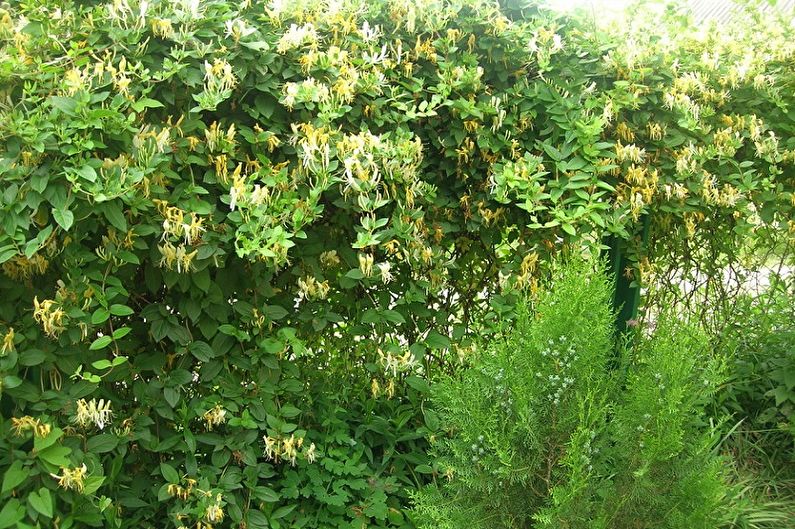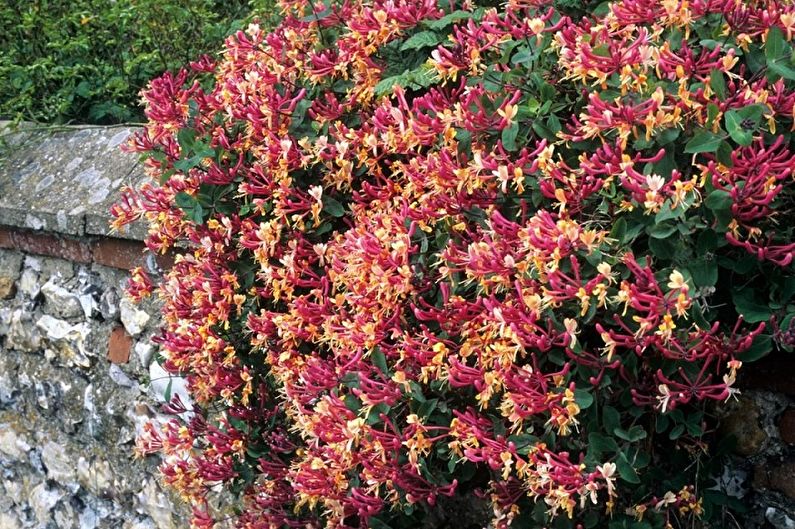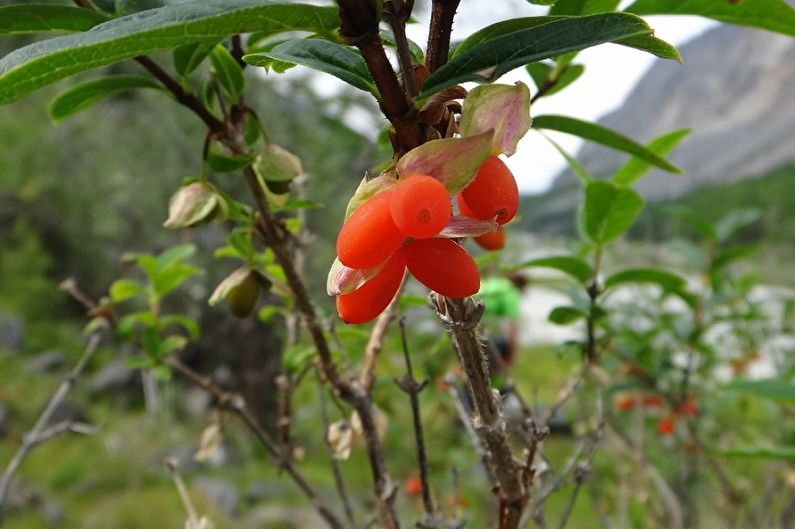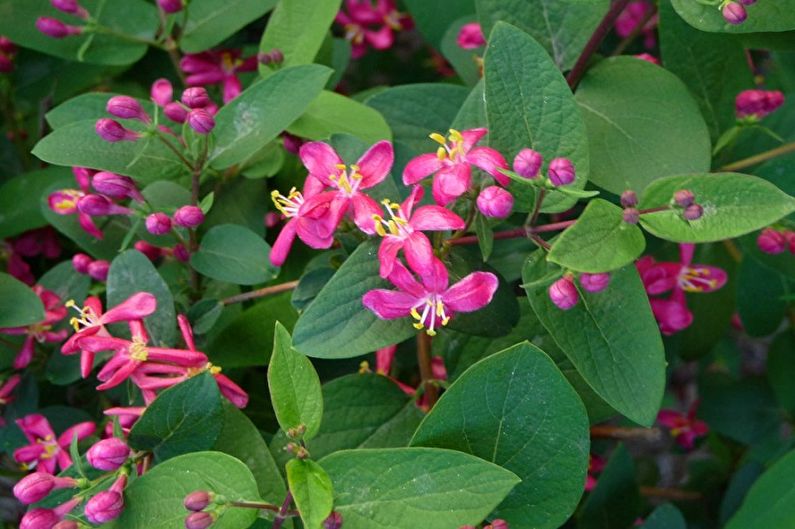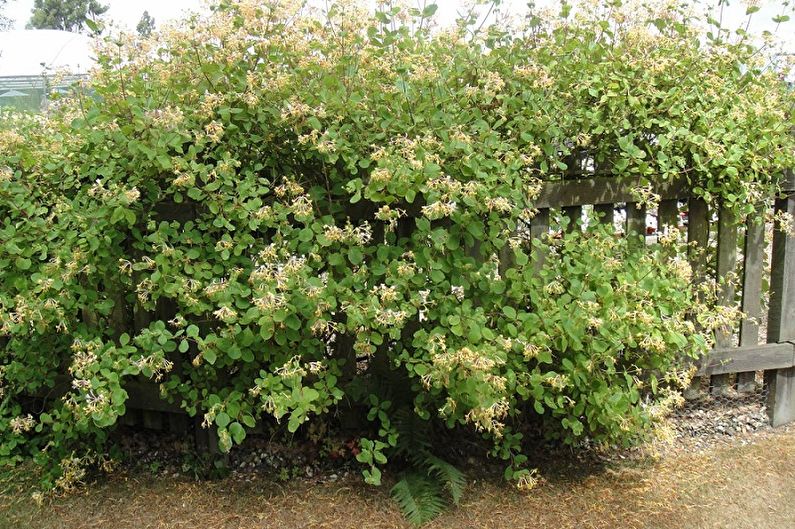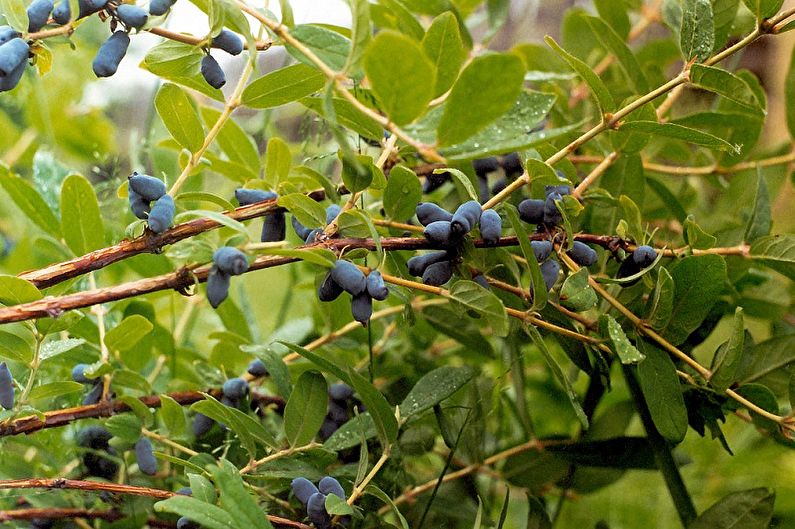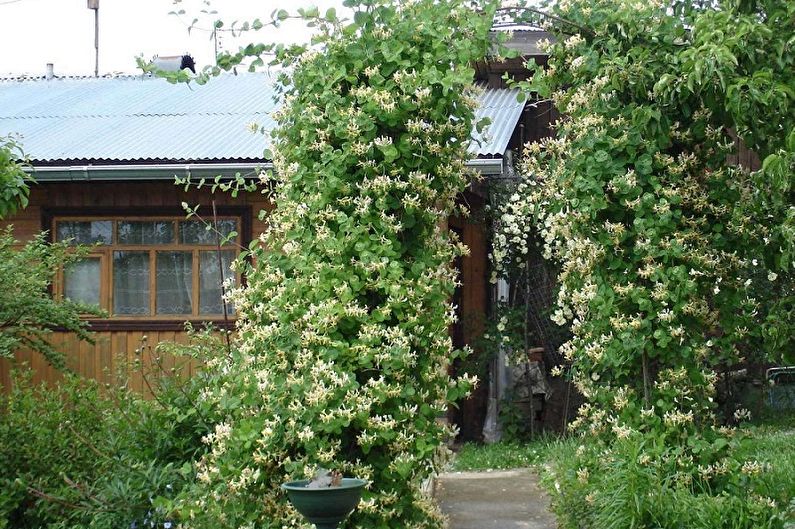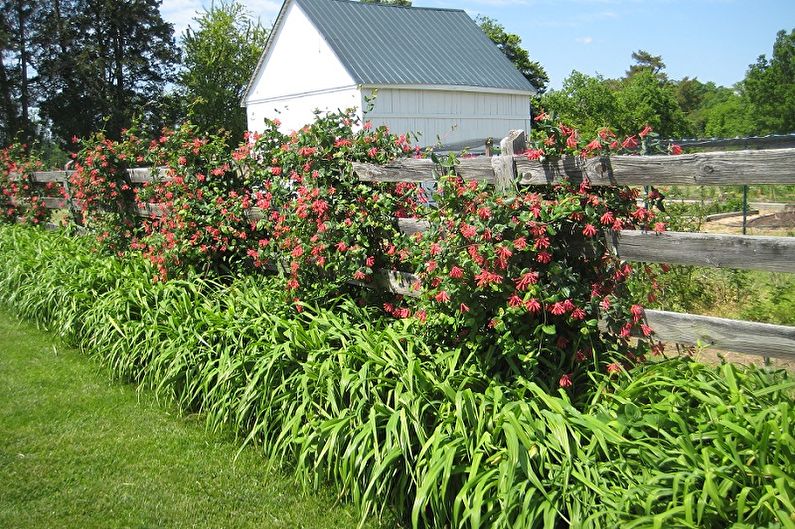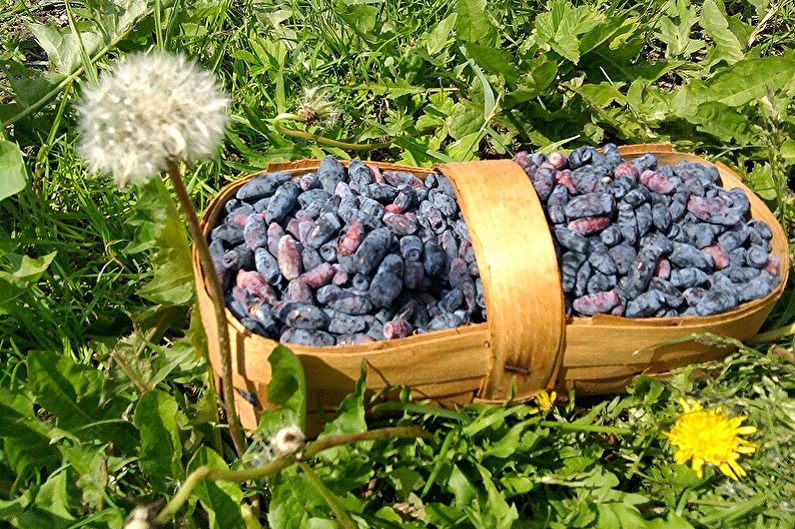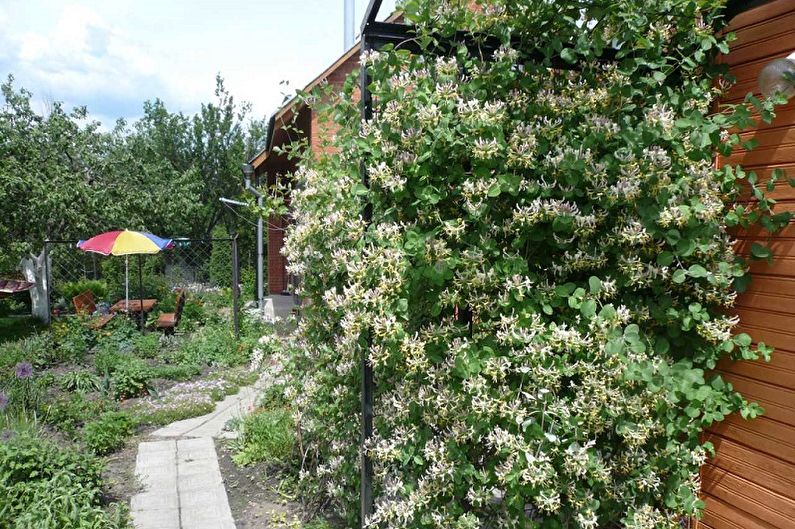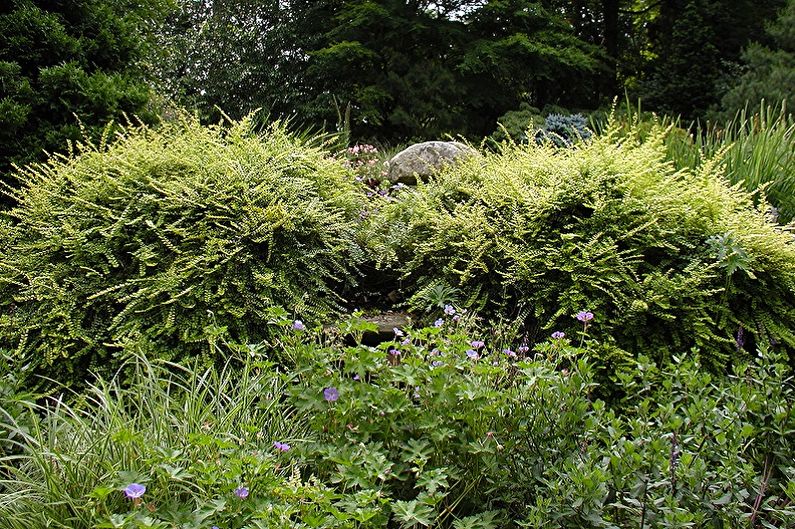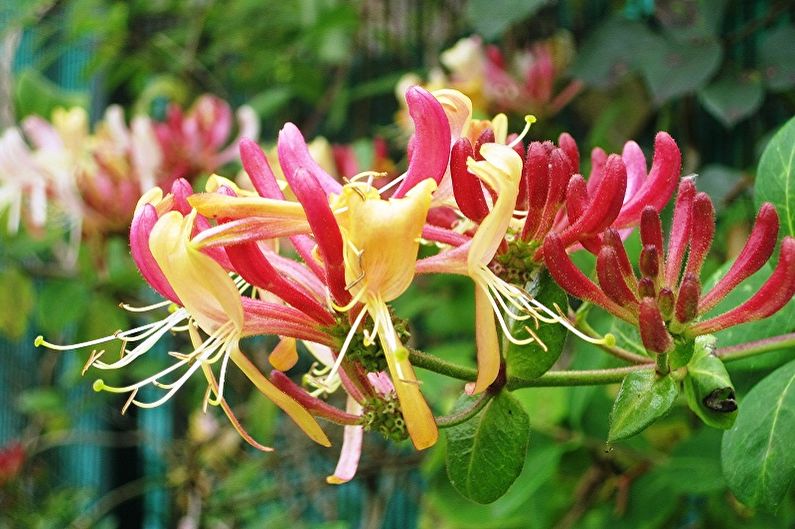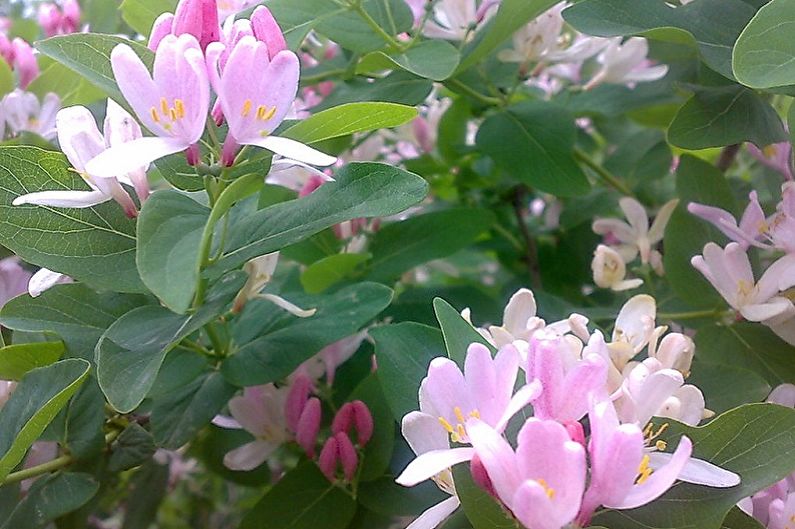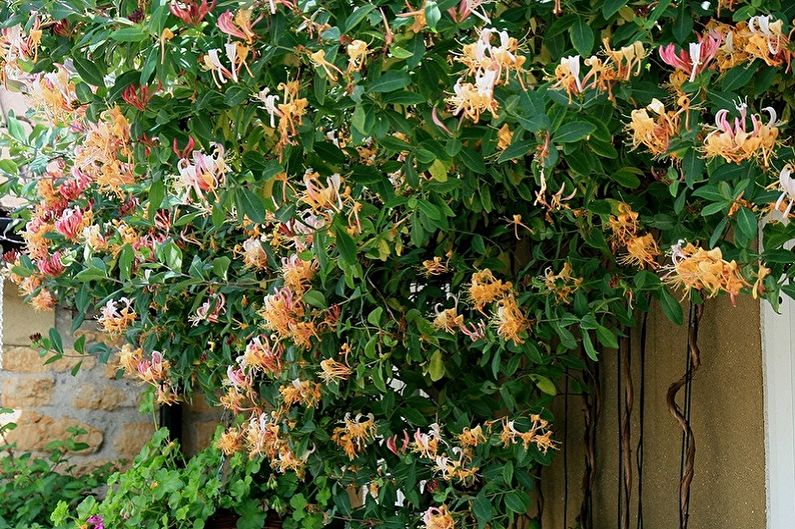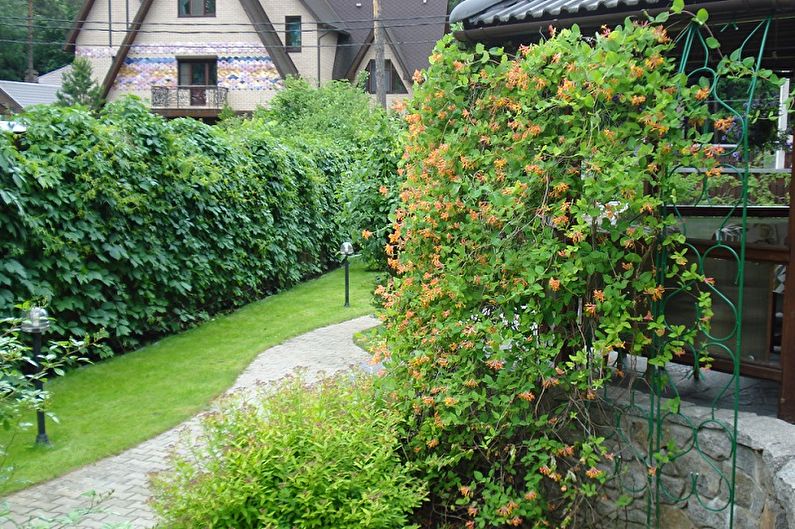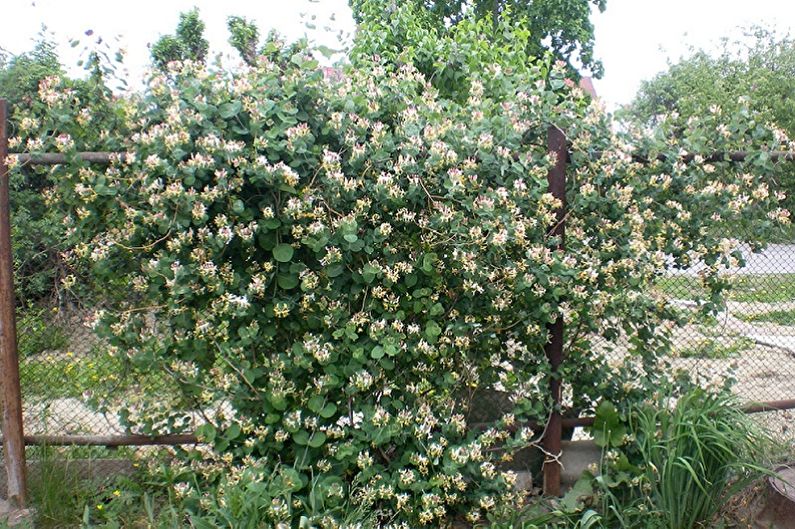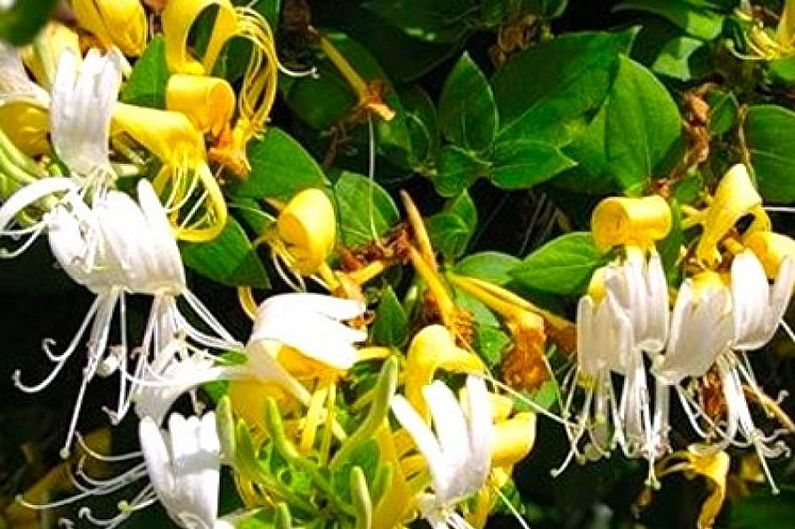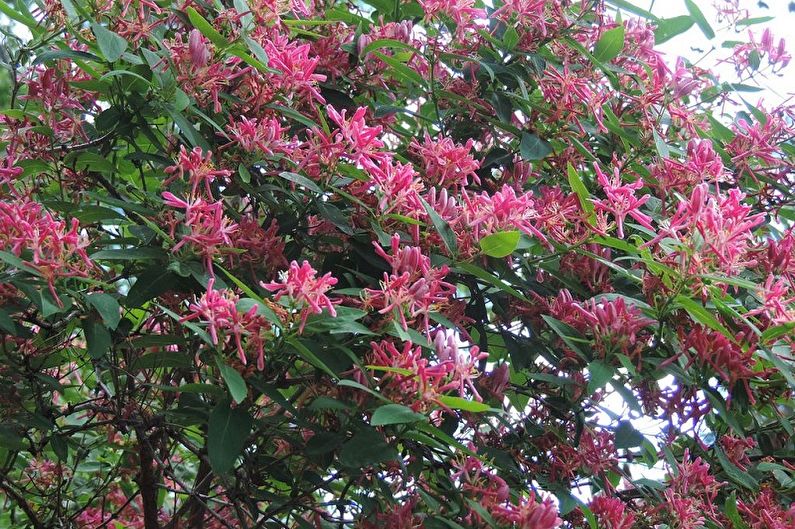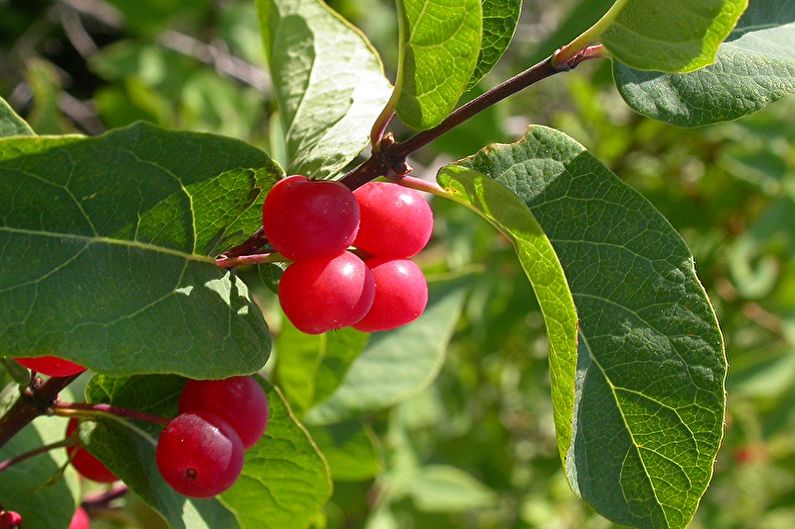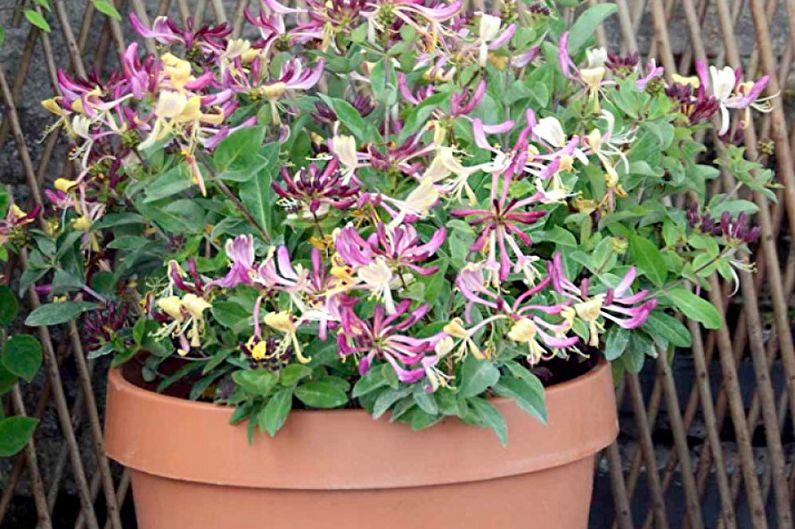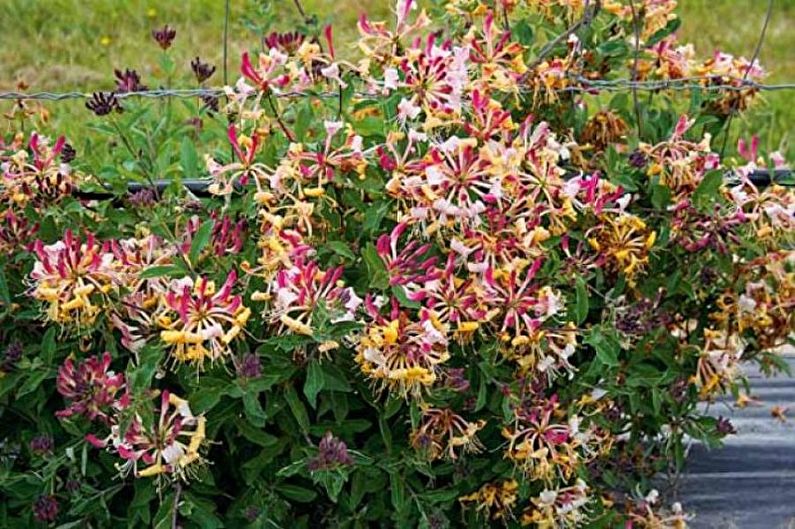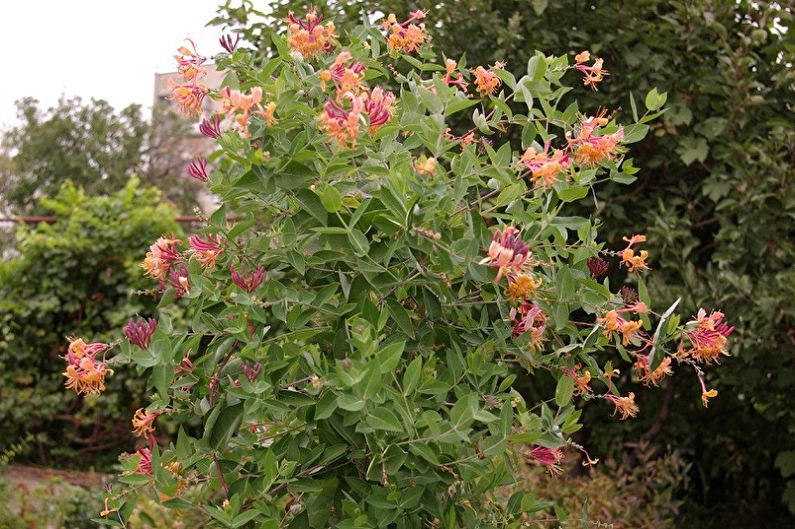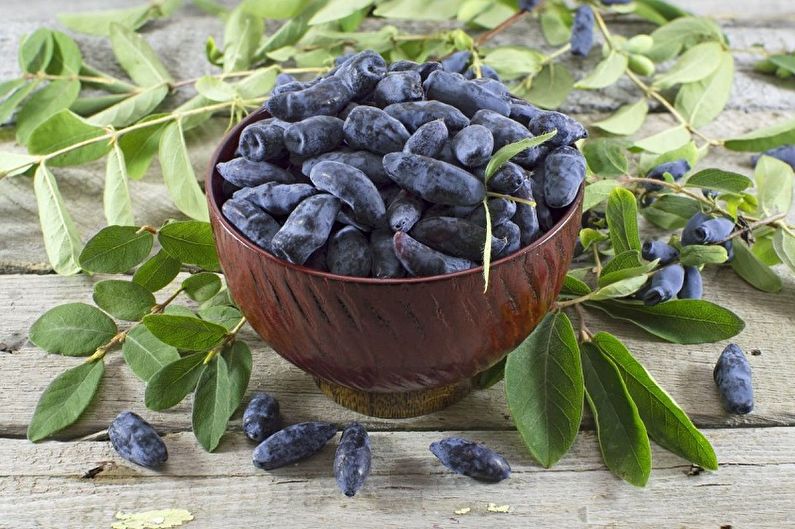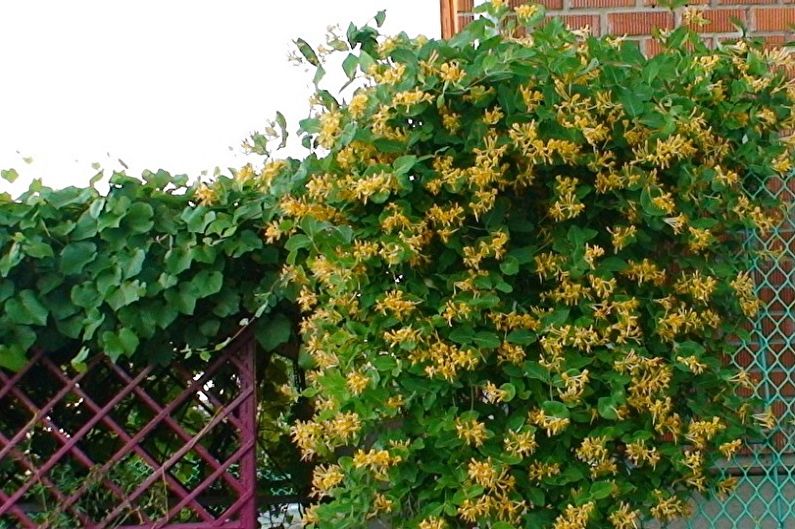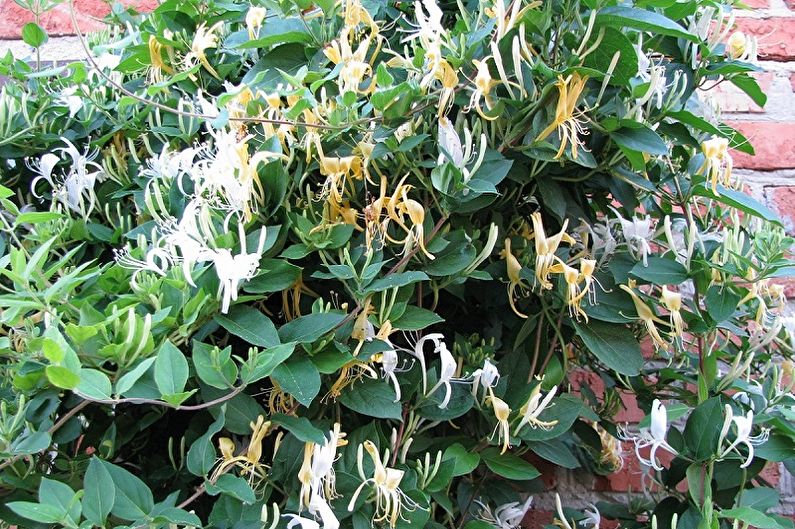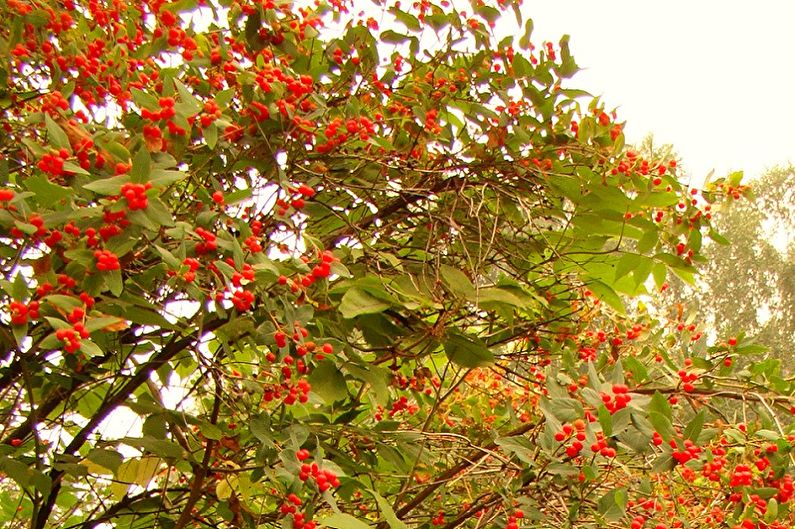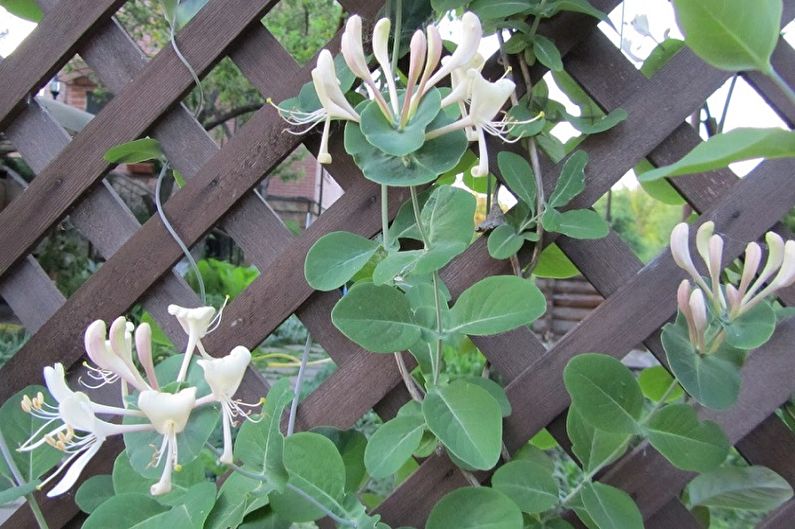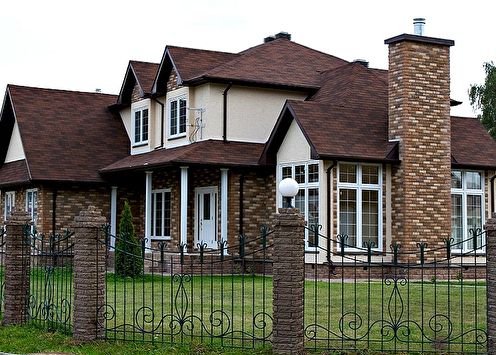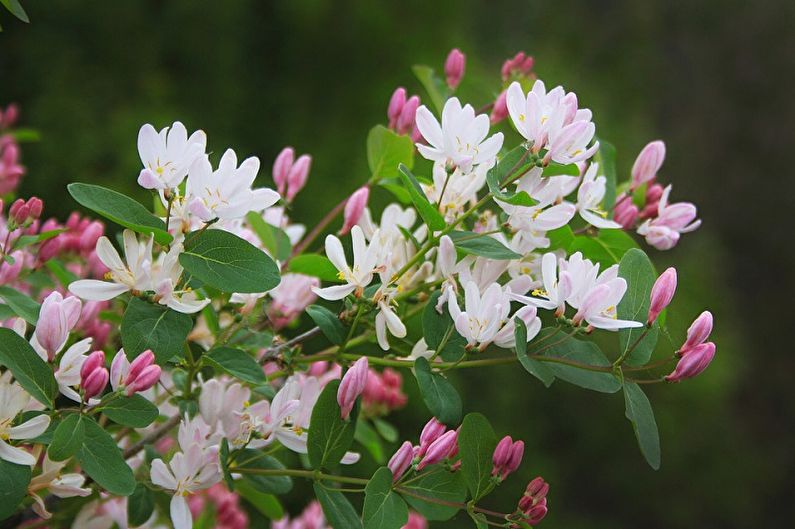
Honeysuckle is a decorative garden bush from the family of the same name. Depending on the particular variety and species, it can be erect, creeping and climbing, which is why it is especially popular in the development of landscape design. Large and bright flowers of different shades adorn arbors, alleys and decorative compositions. Enthusiastic connoisseurs know that there are edible varieties. The berries of such a honeysuckle are as useful as the other more famous ones, and the growing process is as simple and straightforward as possible.
General characteristics
Honeysuckle (lonicera) owes its name to the German physician and botanist Adam Lonitser. Ornamental varieties with bright colors and shiny berry fruits are used in gardens, in the design of plots and adjoining territories. They bloom from late spring to mid-summer. Some varieties are found in the wild, and some are introduced specially by breeders and gardeners.
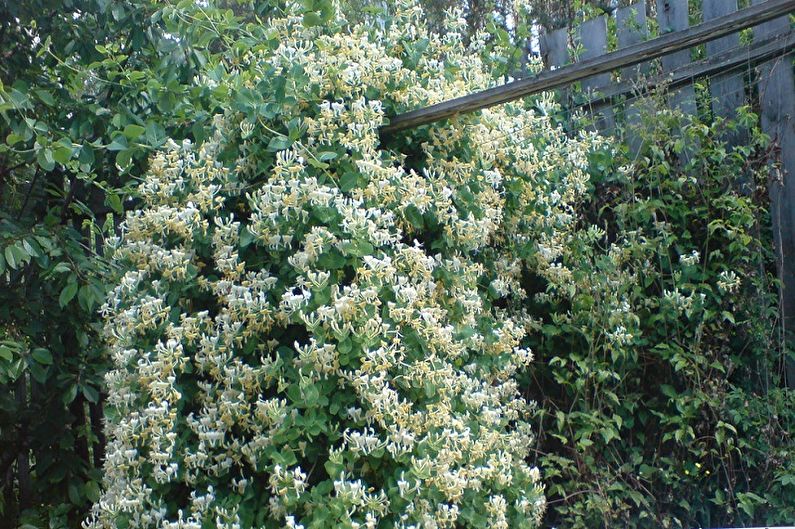
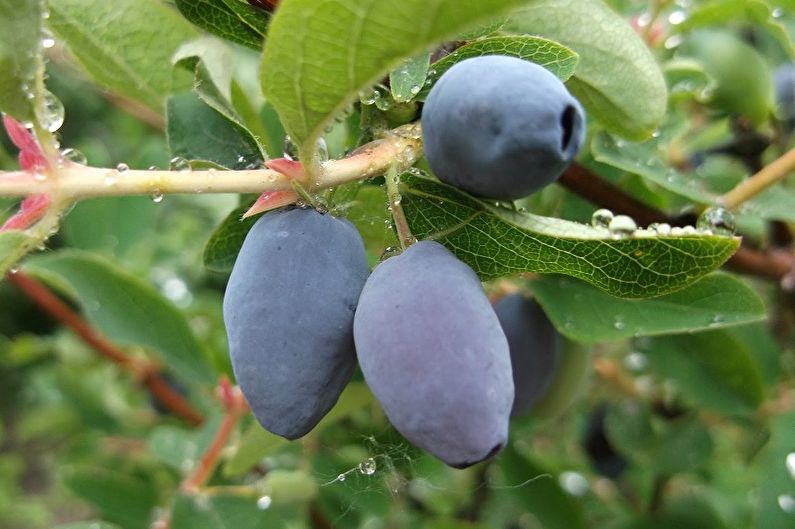
Honeysuckle species
Species and varieties of honeysuckle can be discussed for a long time. There are more than two hundred species, and they all differ in appearance, lifestyle and habitat. Most of them grow in the Northern Hemisphere, in particular in East Asia and the Himalayas. In our latitudes, several dozen varieties are common, and about ten of them are edible.
Edible honeysuckle
This is a separate category, which is not yet as popular as other berry bushes. Although growing it even from scratch is no harder. Honeysuckle is not afraid of frost, it needs only minimal care, and it feels great on scanty soil. At the same time, it perfectly decorates the garden with large and fragrant flowers. The height of the bush reaches 1.5 m. The largest and most delicious fruits in the northern varieties are Siberian and Altai, but there are also more approximate options.
Compared to other berry bushes, honeysuckle used to produce fruits whose taste resembles blueberries. They are used not only for food, but also in pharmaceuticals and medicine. In addition, it is believed that the aroma of honeysuckle relieves stress and nervousness. It gives the effect of a peculiar phyto- and aromatherapy.
But we must not forget that berries of inedible varieties are not only unsuitable for food, but can also be poisonous. The people called this honeysuckle a wolf berry.
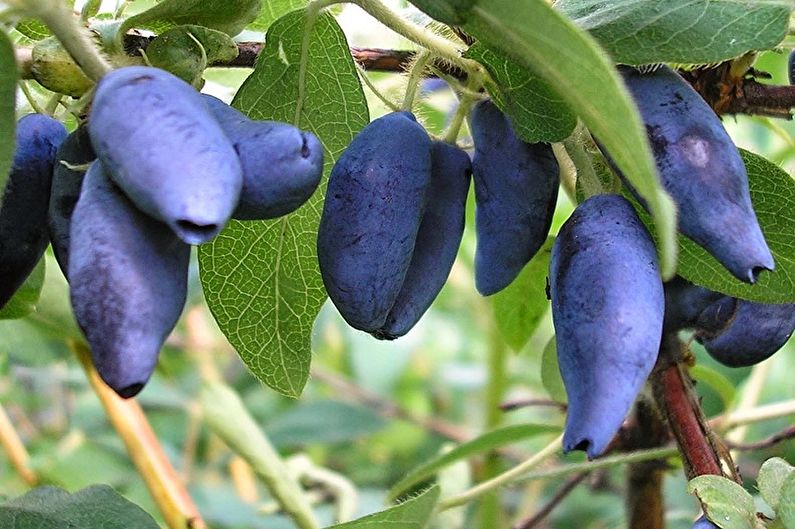
Honeysuckle
The most famous decorative variety of honeysuckle. That is how it was originally planned to call the whole family. Honeysuckle was brought from Southern Europe and the Caucasus. These are large curly bushes, which, with proper care and strong support, extend up to 6 m.
Honeysuckle is a honey variety with fragrant yellow-purple flowers. In some regions of Crimea, reddish or white are found, but they also turn yellow at the end of the cycle. The fruits of the honeysuckle are red. The main flowering period is June.
Among the advantages of the variety are rapid growth, life expectancy of up to 50 years, and compatibility with other plants. Often, honeysuckle is planted with climbing roses. For successful growth, moist moist fertile soil is enough for it.
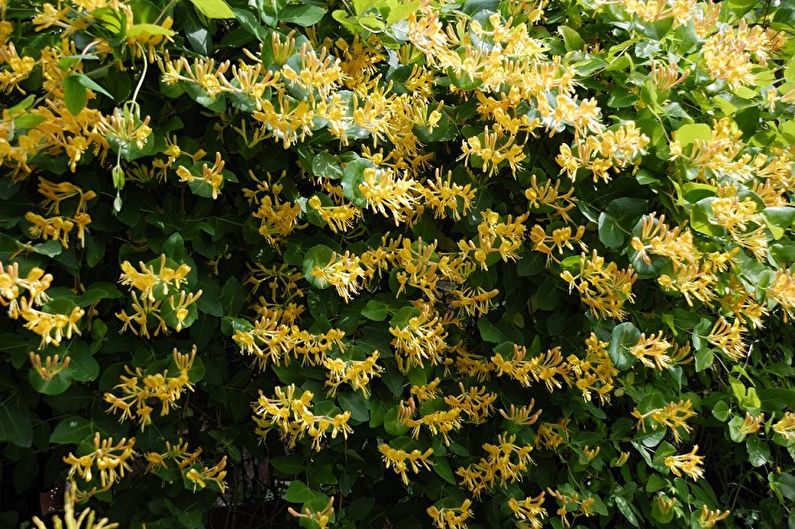
Curly honeysuckle
In the natural environment, climbing varieties are common in Europe, Asia and North Africa. They are appreciated for their excellent decorative qualities and intense flowering. The average height is up to 5 m. The flowers are fragrant, of a saturated red hue with a yellow core.
There are several subspecies of climbing honeysuckle: golden aurea, purple belgika, and late serotin. The latter is especially loved by gardeners for a long flowering period - almost throughout the summer.
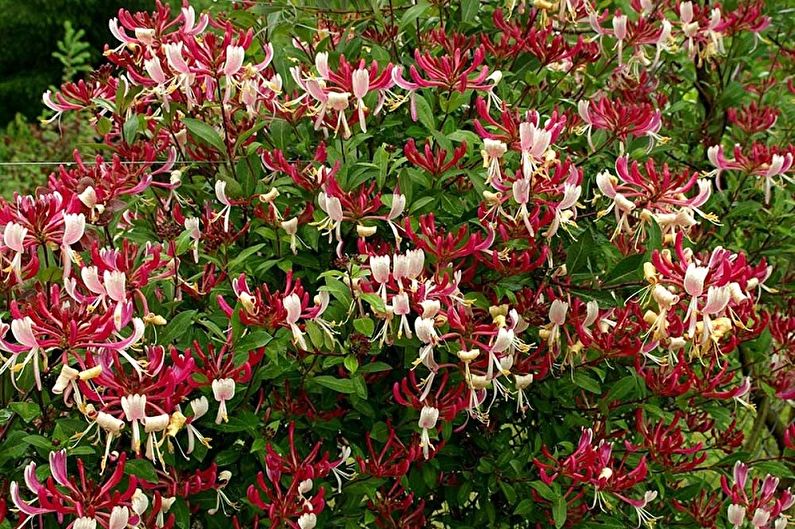
Honeysuckle Tatar
Wild Tatar honeysuckle grows in strictly defined regions: in Kazakhstan, Siberia, Altai. But it is successfully bred by gardeners in many subspecies.The height of the shrub is up to 3 m. It begins to bloom by the end of spring, and the colors range from white to dark pink and saturated red. There are several varieties: Alba, Grandiflora, Siberia, Punik, Lutia, Latifolia and others. All of them are unpretentious and frost-resistant. They differ mainly in shades and decorative properties.

Honeysuckle Alpine
This is a small ornamental shrub up to 1 m tall. It looks perfect when decorating arbors and borders, in hedges. Yellow flowers with a reddish tint almost odorless. But the dwarf variety is more resistant to parasites and pests than others, so it is very popular among gardeners.
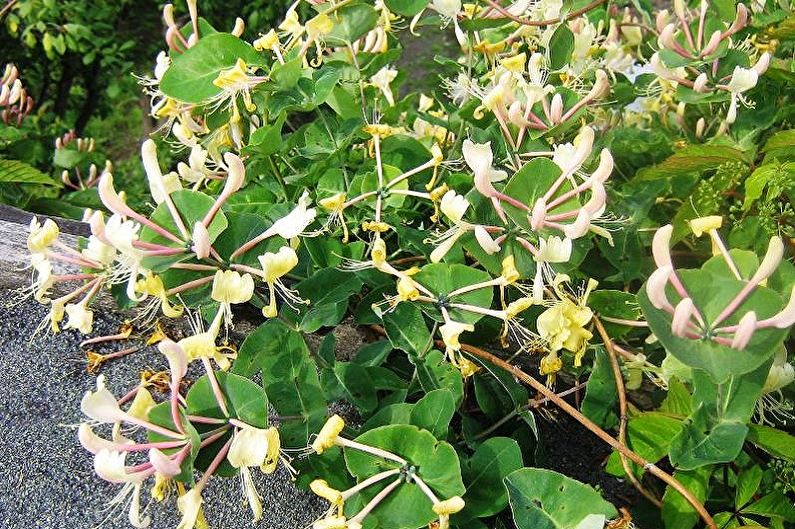
American honeysuckle
Breeders bred an unusual hybrid, combining honeysuckle with Tuscan honeysuckle. This is an interesting winding variety with purple flowers. But he does not tolerate frosts, therefore, requires shelter for the winter.
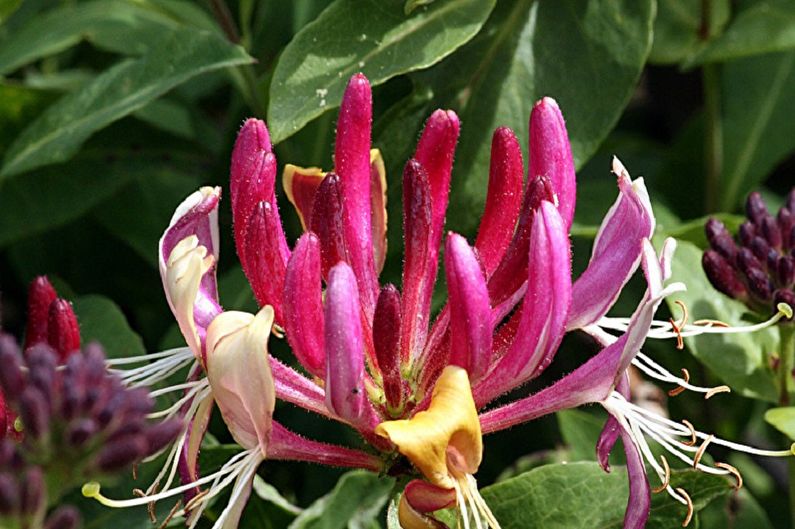
Golden honeysuckle
The peculiarity of this variety is in a dense, volumetric crown up to 4 m high. Its flowers are an excellent honey plant with a characteristic aroma. The hue is golden. After flowering, the bush is decorated with shiny decorative red berries.
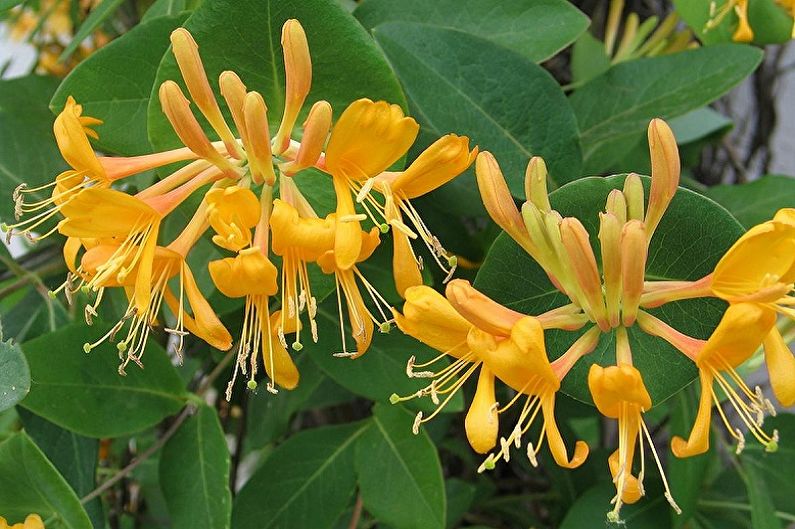
Alberta Honeysuckle
Another small and graceful shrub up to 1.5 m. It is miniature, with delicate shoots and fragrant lilac flowers. This variety is not afraid of not only frost, but also drought. Small leaves are hard to hurt. It can be safely planted to decorate alpine slides and stone gardens.
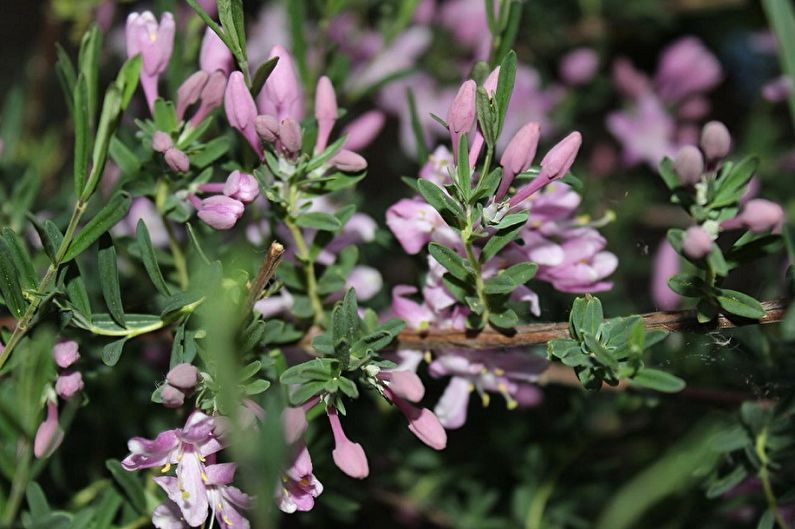
Honeysuckle Care
The most difficult phase of honeysuckle care is choosing a landing site. Most varieties need both sun, moisture and the absence of strong winds. On dry and scarce soils, bushes are often planted in the shade of fences.
The root system of the bushes is quite superficial, so you do not need to constantly loosen the ground so as not to damage the rhizome. But feeding and mulching are excellent. The first additives are introduced during flowering. The second feeding based on vermicompost - during the appearance of the fruit. The third is after the harvest. Usually, grass fertilizers with ash are used for this. Closer to winter, again mulch the bushes with compost to protect them from frost.
Periodically, the bushes need to be cut. This is especially true for edible varieties, because only new shoots bear fruit. Rejuvenating honeysuckle is recommended every 3-5 years. To do this, cut off all the old and frail shoots, leaving some of the healthiest, youngest and strongest. The oldest bushes can be radically rejuvenated: cut them to the ground. With regular care, honeysuckle quickly grows back.
In addition to rejuvenation, you need to regularly remove old and broken branches, improperly growing and damaged shoots, any other problem areas. Often it is they that lead to the manifestation of diseases and fungus.

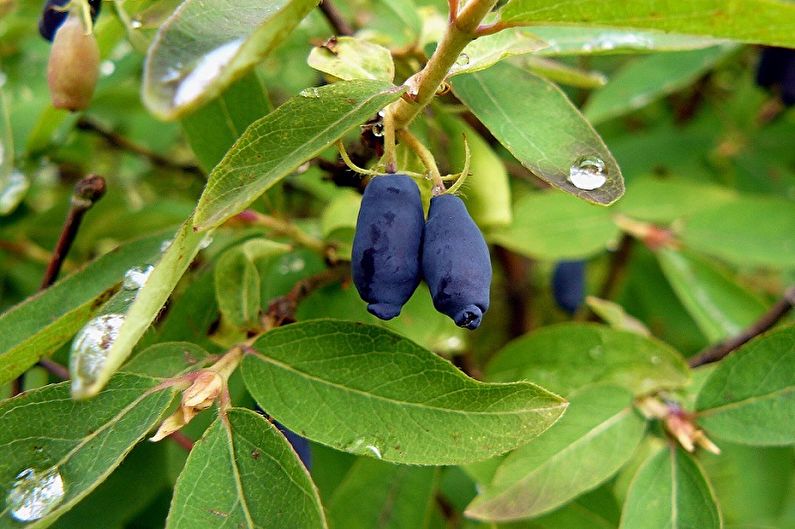
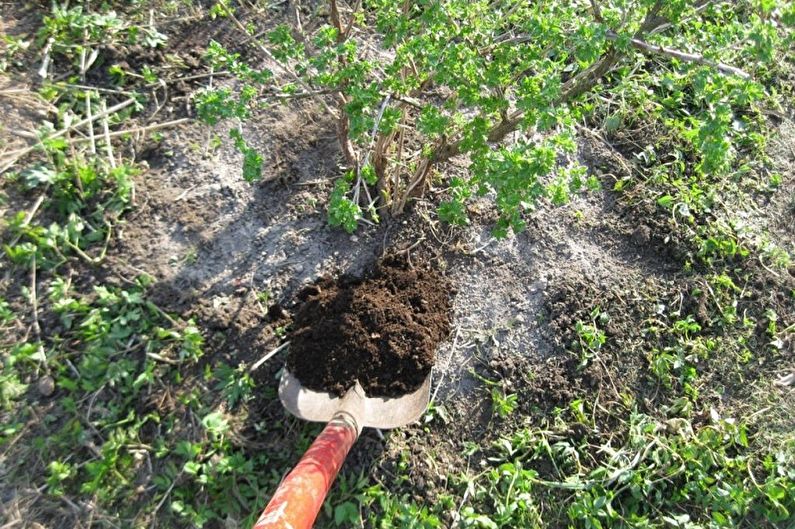
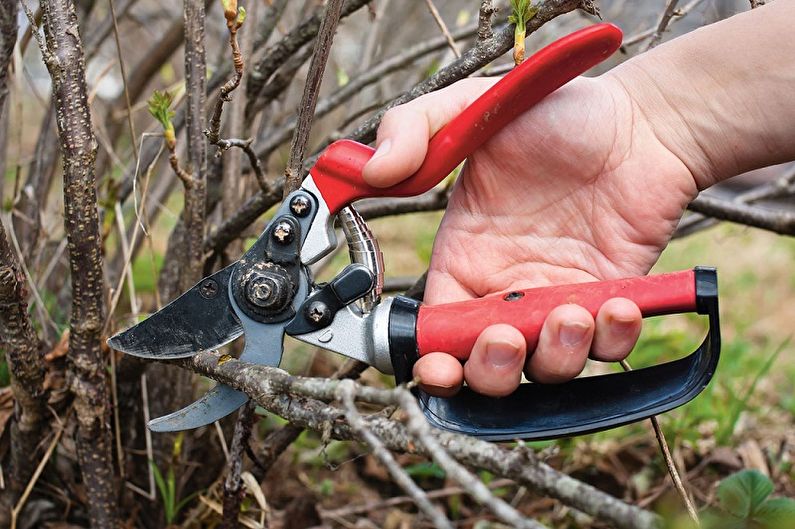
Transplantation and reproduction
Honeysuckle is planted in May or September. It propagates by seedlings. First, prepare a planting pit with a depth of about 45 cm. It is important to observe the distance between the bushes - on average, about 2 m, but this depends on the particular variety and its size.
Pour compost, ash and superphosphates into the pit. Form a mound inside. Gently place a seedling on it and spread its roots along the edges of the knoll. Fill the hole with soil and compost, pour, fill to the end, tamp a little and pour again.
You can not be afraid to overdo it with moisture. With honeysuckle, this is no easy task. After planting, it is important to avoid drying out. Therefore, seedlings are necessarily mulched with grass, straw or other suitable materials. Particularly carefully monitor the humidity in the summer after spring planting.
When choosing and planting, it is better to alternate varieties - so the flowers are better pollinated, and the first fruits will appear in 2-3, less often - after 4 years.
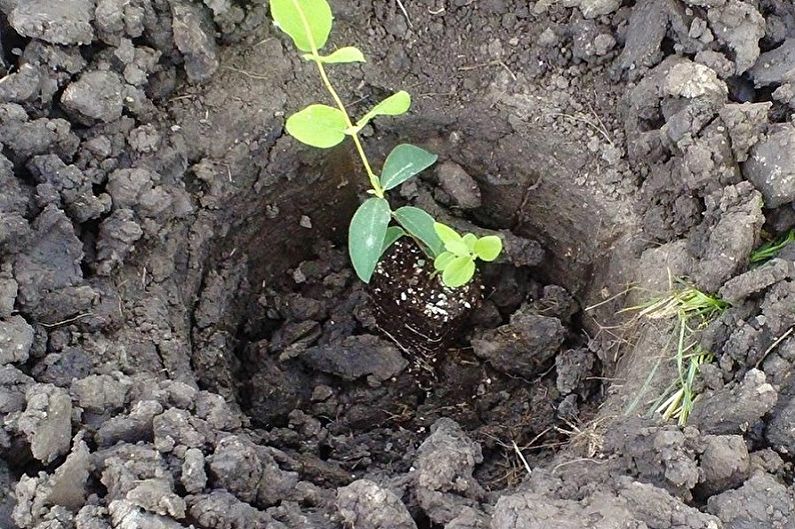
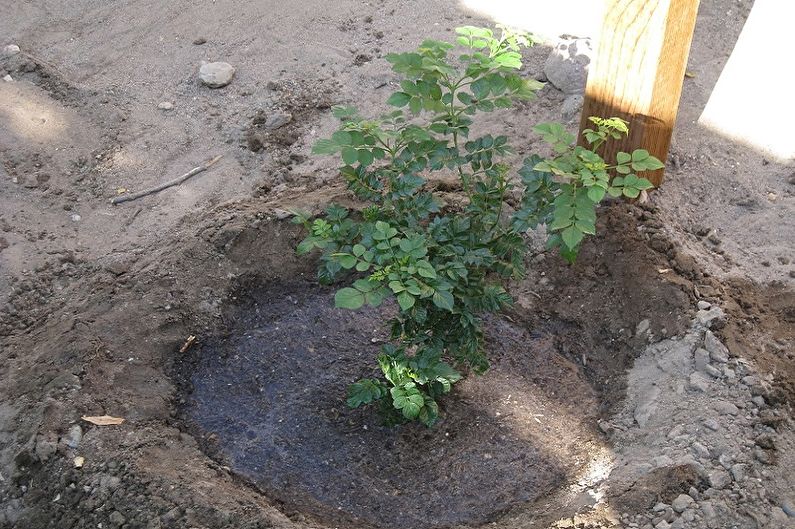

Pest and Disease Control
Different varieties of honeysuckle, basically, face the same problems.
If the leaves begin to dry gradually - most likely, this is a fungal infection of ramulariosis, tuberculosis or cercosporosis.First, yellow or brown spots appear, which gradually become more and more. Because of this, the leaves wither and weaken the entire plant. It is necessary to remove and burn all affected fragments.
Another common fungal problem is powdery mildew. You can deal with it by treating shrubs with sulfur-containing drugs.
Some species of nematodes spread mottling or mosaic virus. It is almost impossible to deal with them, so you will have to carefully destroy the damaged shrubs and carefully select planting material.
The most common pests are rosette leafworm, honeysuckle fingerworm, aphid, gooseberry moth, scale insects. They have to be fought mechanically and through regular use of special insecticides. Chemical preparations are introduced in the form of small-drop irrigation, but they cannot be used when it comes to edible varieties.
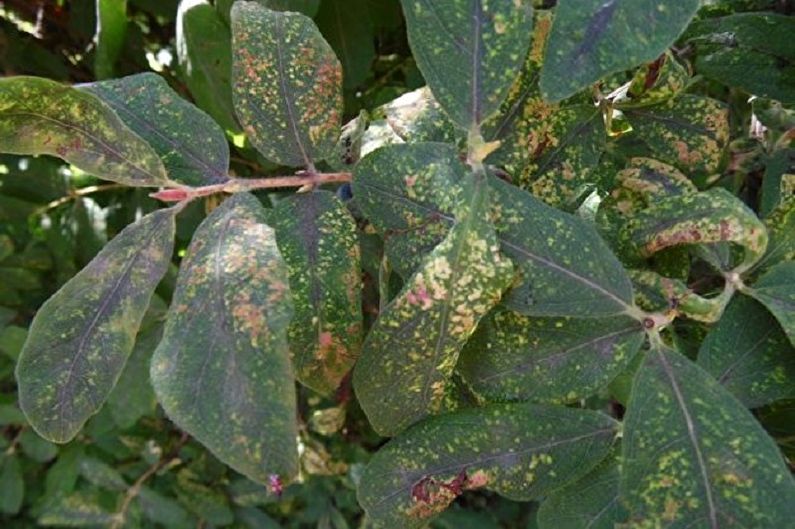
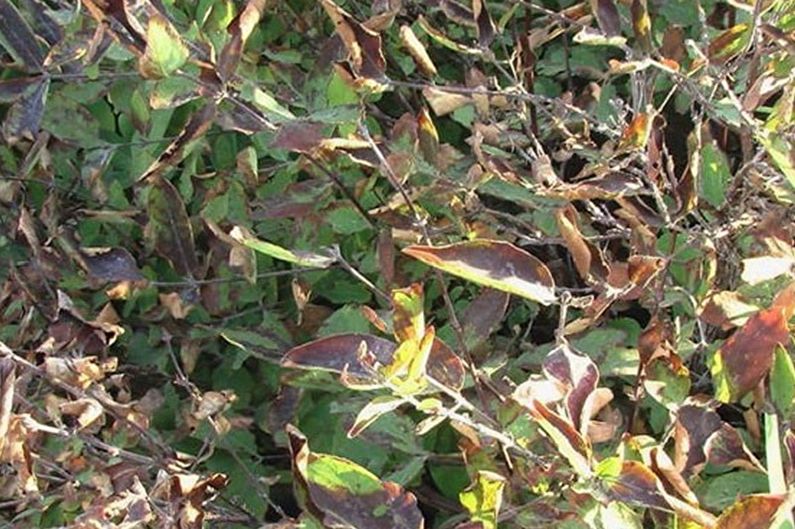
Honeysuckle - photo
To make your seedlings always beautiful, bright and unusual, check out our selection of photos. We have collected the most interesting examples and combinations with honeysuckle. Enjoy watching!
